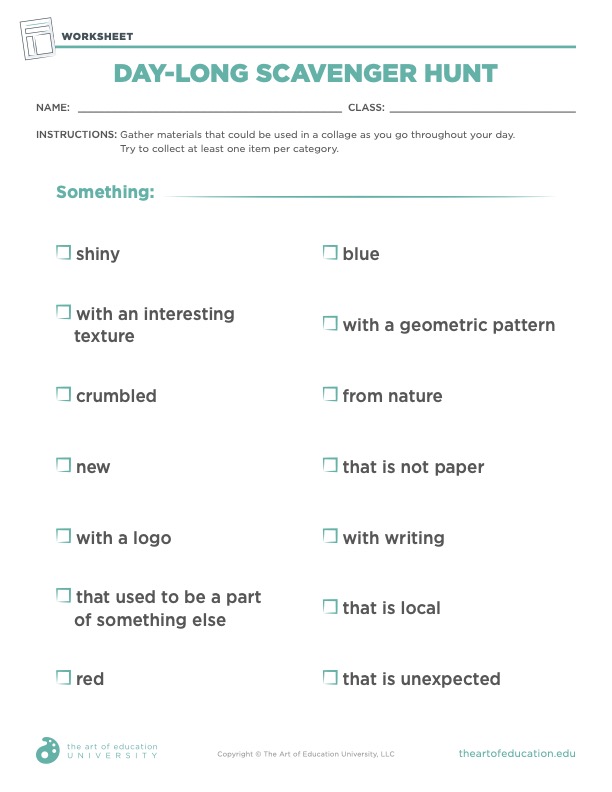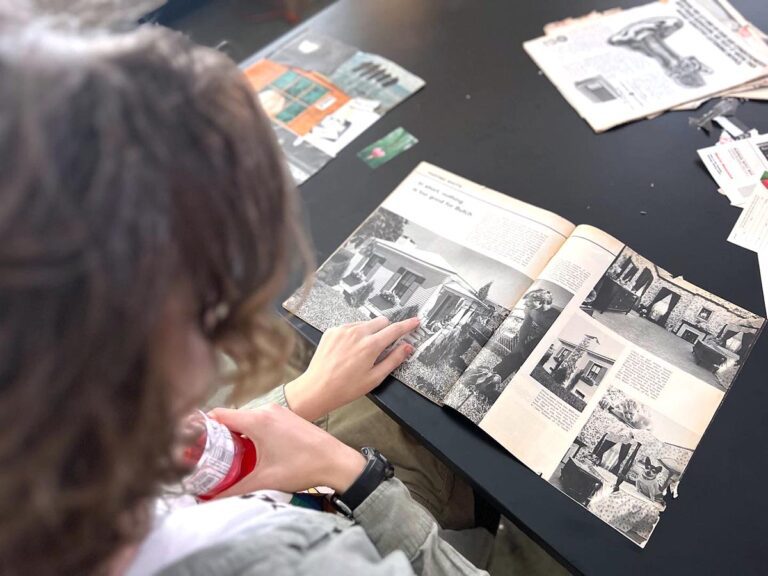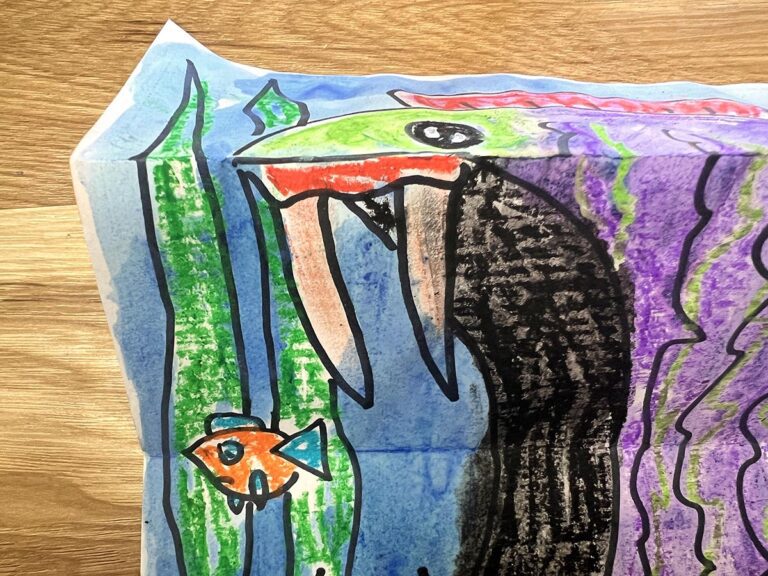Have you ever found yourself in the middle of a long-term project, grinding towards weekly goals, wishing for the weekend, so you can take a break from it? Have you noticed when undesirable student behaviors start to gradually increase, the task they are working on doesn’t support their goal, or the quality of their work declines? These are just a few tell-tale signs that you and your students are experiencing stress and symptoms of project burnout.
We want our spaces to feel joyful, inspiring, and different from the more rigorous academic parts of their day. We never want the art room environment to feel like a drag or a stressful place. To combat feelings of stress and project burnout, consider unprogramming your art room through unstructured play. Dedicated toward greater childhood independence, Let Grow says unstructured play is best motivated by students’ own desires and curiosity. In order to understand the importance of play for all ages, let’s first think about stress and what makes a healthy learner.
Read on to discover how unprogramming in the art room can decrease student stress and encourage joyful learning.

Can students be stressed?
When we are stressed, we are often self-absorbed. We may think that our students couldn’t possibly understand stress because they don’t have as many responsibilities as us. Or we may think that because they are so young, they don’t experience stress yet. It can be helpful to step away and remember that our students can also be stressed—at any age level! Since students do not generally recognize all of the signs of stress in themselves, we must keep a keen eye and ear toward their cues. Paul J. Rosch, former President of the American Institute of Stress, writes in the foreword for James H. Humphrey’s book, Childhood Stress in Contemporary Society, that “unlike other groups, children may not be aware that they are suffering from stress-related symptoms and are unable to voice their complaints as effectively as adults.”
Initially, it may appear that students are simply testing boundaries. They may walk over to other art tables to socialize, destroy art materials (broken erasers, anyone?!), make poor choices like throwing paper balls, and put minimal effort into their task. But often, their choices are rooted in a deeper discomfort they need help articulating.
Some stress is normal and even beneficial for us all. Good stress, known as eustress, is directly tied to one’s ability to cope with stressors. Challenge Success, an organization founded by Stanford’s Graduate School of Education, makes a clear distinction between stress and eustress, emphasizing that negative stressors create conditions for a distressed child. In their article All Stress is not Distress, they point out that “Eustress, which a student might experience when they’re learning a new skill or being challenged to move outside of their comfort zone, can support development of confidence and competence.”
For example, a student learning to use acrylics may feel stressed about learning the properties of this new medium and the techniques that go along with it. They may be worried about getting permanent paint on their clothes, or they may be feeling the pressure of using a more expensive paint, or perhaps they are unsure if they will be able to blend their shadows smooth enough before the paint dries. However, they may be excited about exploring a new, advanced medium. In general, eustress promotes healthy learning, is short-term, exciting, and within a child’s ability to manage.
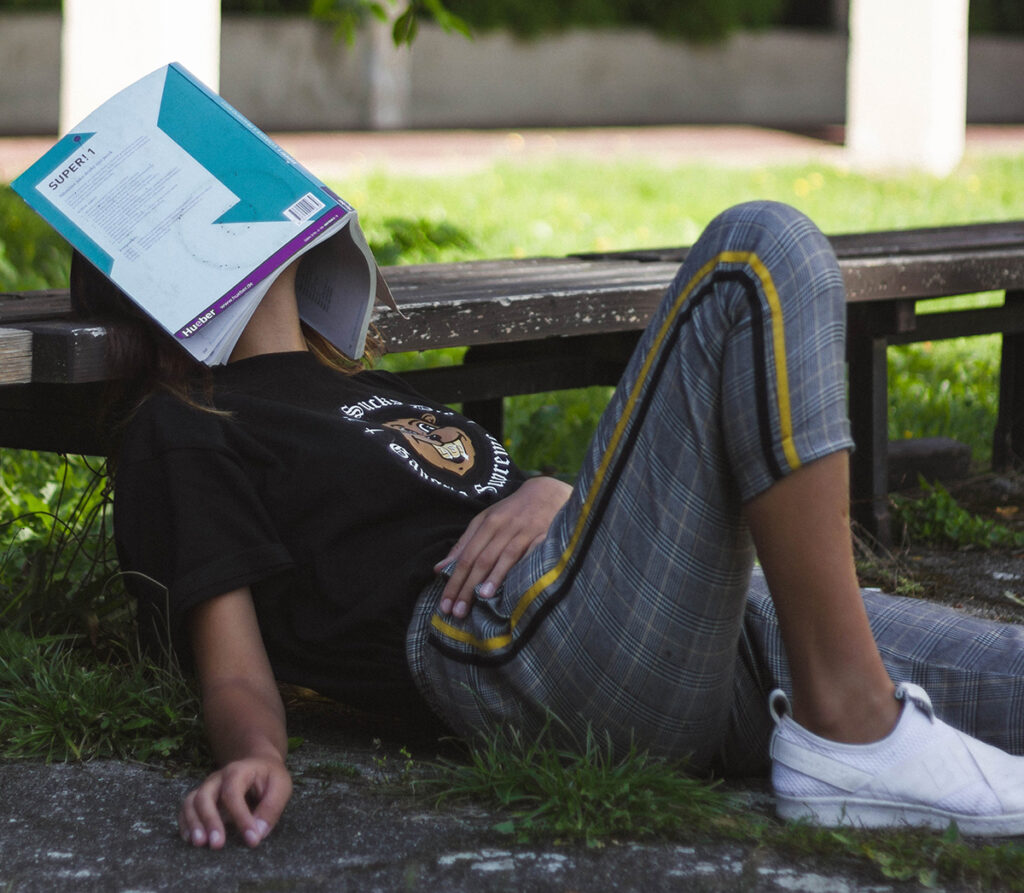
Conversely, students can become distressed when the challenges they face are outside of their ability to manage. When this occurs, it is characterized as “ongoing stress that can be harmful to their health and interfere with positive growth and development.” There are myriad stressors that exist for students: from multi-step assignments that feel like they will never end, to pressure from parents to achieve good grades, to attending school during a pandemic. These stressors occur in addition to the expectations students may already carry for themselves in terms of performance and social pressures. Further, stressors are considered interrelated, not isolated, as stress is cumulative. According to McCarthy (1990) and Yang and Farn (2005), we as teachers should care about stress since studies suggest that it may lead to absenteeism, low motivation toward courses, and high dropout rates.
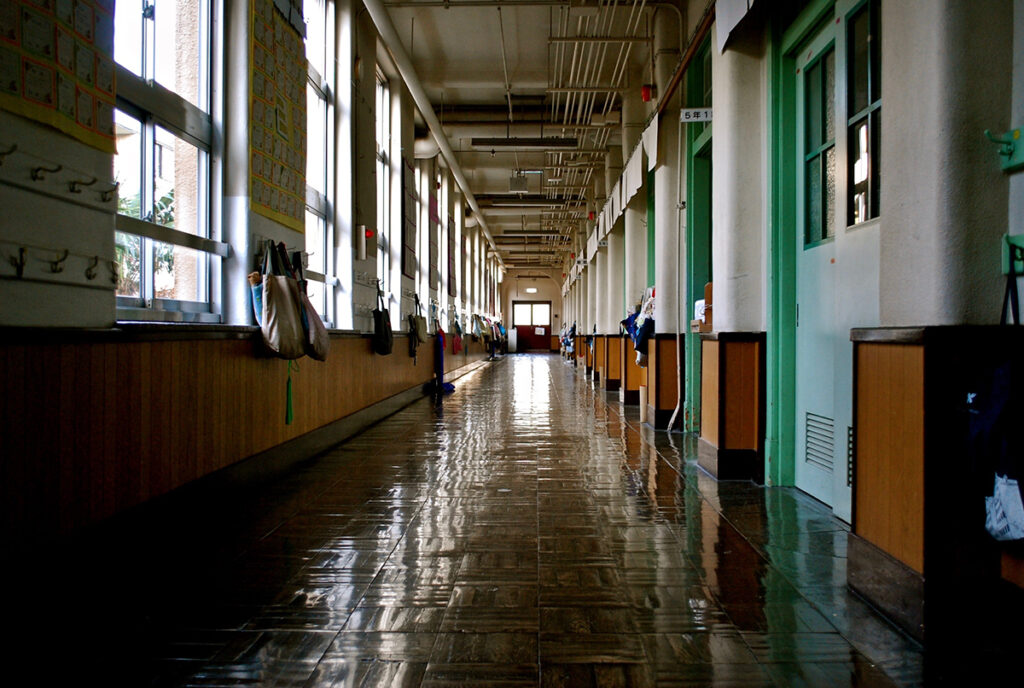
How do we get ahead of burnout?
While setting goals and meeting objectives are important, taking the time to conduct check-ins and offer breaks can be one way to gauge stress levels and prevent burnout. AOEU writer and art educator Jonathan Juravich has incredible ideas for supporting social-emotional check-ins with your students that you can read about here. Additionally, it is incredibly helpful when we are reflective and aware of our own stress levels. Studies show a connection between teachers’ stress levels, burnout, and their students’ satisfaction.
The World Health Organization characterizes burnout as “feelings of energy depletion or exhaustion, increased mental distance from one’s job, and reduced professional efficacy.” This is also known as chronic stress or toxic stress. Unprogramming your art room for a day (or a class period) is an underutilized tool you can apply. It can revitalize both you and your students’ spirits. It also creates an opportunity to open the conversation on the critical topic of stress and coping mechanisms for getting ahead.
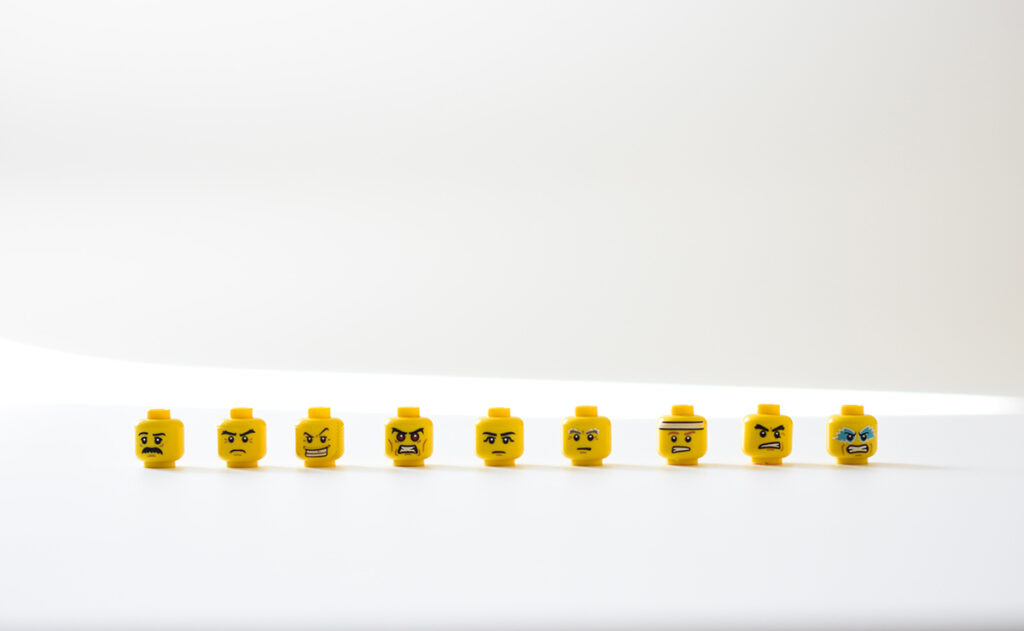
What is the science behind unprogramming?
As mentioned previously, students have trouble identifying and articulating their stress before it leads to distress and feelings of being overwhelmed. They are probably not going to ask their teachers to take a break—or do so in a respectful and reflective manner. Consider modeling self-care for them. Offer an unprogrammed day and explain why you are providing it.
Start by grounding yourself in why you are choosing to do this and speak to your class about it. You might say something like, “It seems like some friends have been having a hard time focusing on this project, and I understand we have been working on it for a while. Does anyone want to talk about what feels hard?” You can go on to say that deadlines exist and are important, but taking breaks is a great strategy to maintain momentum. Breaks can provide perspective.
As noted in the clinical report by the American Academy of Pediatrics, The Power of Play, “play is not frivolous: it enhances brain structure and function and promotes executive function (ie, the process of learning, rather than the content).” Returning to a project with renewed spirit and a fresh way to practice skills essential to learning is far more productive than pushing through an artwork half-heartedly. Your students will benefit from and appreciate your ability to see past their superficial behaviors when you tune into the stress that lies beneath them. The best part about unprogramming for a class period or a day is that you don’t need to overthink it!
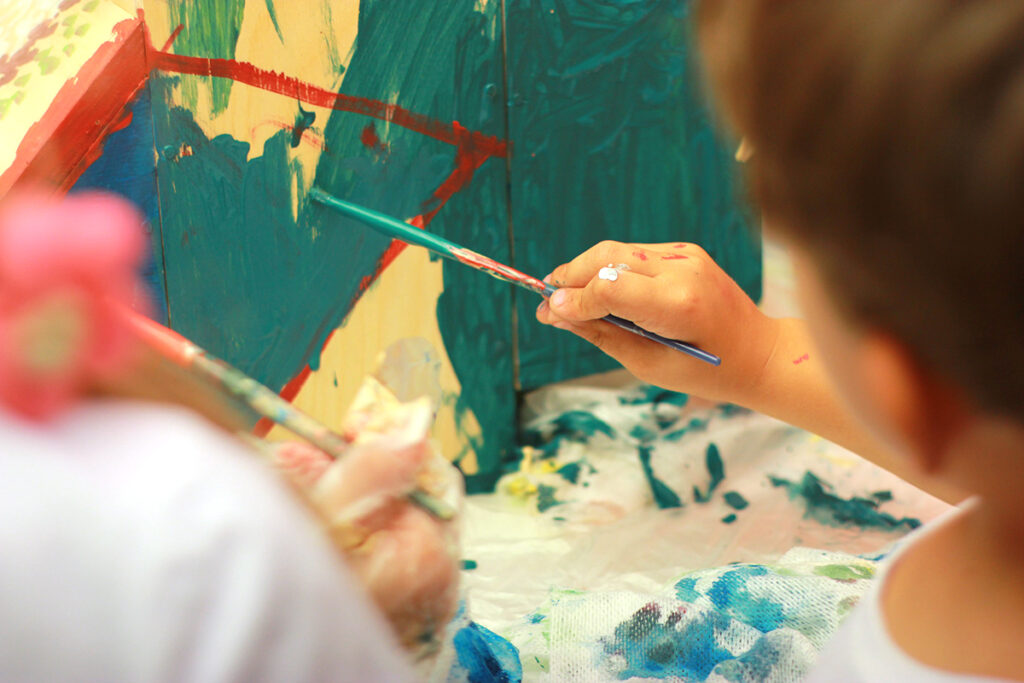
Here are four ideas to unprogram in the art room with tons of resources and tips!
Students always surprise me with what they choose to do when given the freedom and opportunity of an unprogammed day. Stress relief looks and feels different to every individual, so be open-minded and work within reason. Everyone does not need to enjoy their unprogrammed class period the same way. Vincent Iannelli, MD, reminds us that “this kind of play is meant to be unstructured, child-driven play… and it doesn’t include passive play, such as sitting in front of a video game, computer, or TV.” This is an “anything-reasonable-goes” kind of day. Try to observe without interfering, as long as everyone is playing safe. Below are four options you can allow your students to choose from.
1. Get outdoors.
If you can go outside, this is an ideal option. Students can spread out and those who need their sensory buckets filled have space for movement.
Here are some outdoor activity suggestions:
- Elementary students can play in a sandbox with toys, dig for nature finds, or take off their shoes to dip their toes in. Remember how good that feels?
- Students of all ages are delighted to have access to equipment. Borrow some balls, hula hoops, a parachute, or cones, and let the students loose.
- The students may choose to organize a game, decide to build a structure, or take out their shoelaces and strap the cones on their heads!
If going outdoors is a hit for your students, continue integrating nature into your curriculum to keep your students engaged. Check out these two lesson plans on composing a visual journal with found nature items, Growing and Grounding in Nature, and creating monotypes with natural textures, Nature-Inspired Monoprints. Find both of these lessons in FLEX Curriculum. For further ways to infuse nature in the art room, check out these two articles, How to Infuse Nature Into Your Studio Practices and “When I am Among the Trees” —8 Prompts to Inspire Artmaking, and this Pack, Creating Art Outside, in PRO Learning.
2. Participate in “free” art time.
Perhaps students want unrestricted access to art supplies! You can allow them to use materials of their choice (within limits, of course) or provide a curated selection of materials of your own choosing. Renowned art educator, author, and pioneer of teaching methodologies, George Szekely, believes art educators can create the ideal conditions for creative free play that then, in turn, informs future lesson ideas. “By observing children at play and using props and situations familiar to them, teachers can build on children’s energy and self-initiated discoveries to inspire school art that comes from the child’s imagination.”
Here are some “free” choice options:
- Add a variety of materials to the supply area like construction paper, cardboard sheets and tubes, tape, glue sticks, and scissors. Students may create anything they like, using the materials available!
- Create stations where students choose their own adventure. A painting station, glue/pom poms/sequins/markers station, and a collage station offer totally different artmaking possibilities and excellent self-directed experiences.
- If you have areas of your room that students don’t often get to spend much time in, this is the perfect opportunity to revisit those spaces. Students can hang out with books from your art library or work on an extra collaborative project such as a giant weaving on a loom. Students can curate a gallery wall or update your room’s theme by painting your windows with tempera.
3. Do a scavenger hunt.
Allow the students to complete a scavenger hunt around the classroom or school. You can use the items they collect in a future artwork, as in the Experimenting with Sketchbooks Collection in FLEX Curriculum, or students can photograph their finds.
Here is a scavenger hunt checklist from the Experimenting with Sketchbooks Collection:
4. Challenge students with games.
Middle and high school students can solve academic challenges through creative play. In an article for Time magazine, Hilary G. Conklin found that students who created board games to review content cited feelings of joy in their learning experiences. She notes that “students were allowed to make choices about what they wanted to learn, had opportunities to try on adult roles, were able to develop imaginative physical and mental creations, and importantly, enjoyed the process of learning.”
Here are several resources to reference as you develop creative challenges or stock up on classroom games:
- 5 Games to Put an Artistic Twist on Field Day
- 3 Super Fun Art History Games
- 6 Games Perfect for the Art Room
- 3 Awesome Art Challenges for the First Week of School
- 3 Art Challenges That Are Perfect for the End of the Year
- Why You Should Make a Mystery Bag Art Challenge
- How to Run a Design Challenge
Stress in school is inevitable, but we hope to produce more of the good kind, called eustress, and get ahead of distress whenever possible. One of our many roles as educators includes tuning in to the stress levels of ourselves and our students. This allows us to stay ahead of it before it becomes overwhelming. We can begin by modeling SEL practices and taking breaks with our students. Demonstrating that we can pause our projects and curriculum by unprogramming shows students we don’t take everything so seriously and that self-care is essential. Talking with students about stress and how to manage it will ultimately pay off by producing happier and healthier learners.
What are ways you unprogram your art class for the period?
What do you notice about student work after they have had time to step away?
Magazine articles and podcasts are opinions of professional education contributors and do not necessarily represent the position of the Art of Education University (AOEU) or its academic offerings. Contributors use terms in the way they are most often talked about in the scope of their educational experiences.

